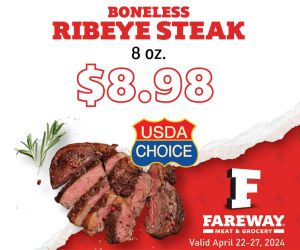MONROE — Public safety officials braced for Thursday’s first snow event of the winter, but it is not just snow that has them nervous — it is the ever-growing threat of striking a deer.
Anecdotally at least, Lafayette County, among southern Wisconsin’s most rural counties, deer vs. car crashes seem to be spiking near the start of the annual gun-deer season and the Thanksgiving holiday, which represents something of a peak for hunters every year. Indeed between 25 and 33 percent of all the state’s car-deer accidents happen in October and November each year, which is the mating season.
Hunting activity also put more deer on the run and near roads, where especially at night, they are unable to gauge the speed of oncoming traffic.
Each year in Wisconsin, peaking this time of each year, there are more than 15,000 crashes involving deer and cars, according to experts and the number is creeping upward. In 2023 alone, there were over 16,150 crashes involving a deer in the state. There is typically a smaller surge in deer/car crashes in the spring.
Of these crashes, 14 were killed and 585 people injured. About a dozen of the crashes involved motorcycles.
“We had one day where there were 5 crashes in the past 24 hours on our roads,” said Lafayette County Sheriff Reg Gill.
The state is trying to address the issue as the dollar amounts of such crashes continue to rise, not to mention the toll of death and injured on state roads. Deer have been known to jump onto hoods, into windshields or ever blindly run into the side of a moving car.
“Most deer-vehicle collisions occur during October and November when deer are active during the breeding phase; however, collisions occur year around,” said a Wisconsin Department of Transportation Statement on the subject. “Taking precautions, such as driving slower during the evening and nighttime hours and scanning roadsides for deer can help prevent collisions.”
Local sheriff’s deputies say that, as with driving in winter weather generally, speed is obviously the biggest factor in not only the number of car vs. deer crashes but also the severity.
“Slow down,” said Gill. “Watch the side of the road. They come on you so fast. It is just unreal.”
Gill theorizes that the problem of car vs. deer crashes is getting worse, perhaps, because each year there is less and less interest in hunting deer, which is vital to thinning the deer herd and keeping it manageable across the state.
If you do hit a deer, the state recommends that you get your car safely off the road as fast as possible to avoid a further collision, and then call 911. If possible — and the vehicle is out of traffic — stay inside the vehicle as many pedestrians are struck walking along roadsides, especially at night and in rural areas.
In fact, a Wisconsin pedestrian was struck and killed by two cars while attempting to remove a deer from the road last Tuesday along State Hwy 8 in Barron County.
Here are some tips from the Wisconsin DOT for avoiding hitting a deer:
● Slow down, eliminate distractions, and make sure all vehicle occupants are buckled up. There are fewer, less severe injuries from crashes when all vehicle occupants wear safety belts.
● Be especially vigilant in early morning and evening hours when deer are most active.
● If you find a deer looming in your headlights, don’t expect it to move away from the roadway.
o Headlights can confuse a deer and cause the animal to freeze.
o Brake firmly when you notice a deer in or near your path.
o One long blast from your vehicle’s horn may frighten the deer to run away.
o If you see one deer, watch for more. Deer seldom run alone.
● If a collision with a deer is unavoidable, brake firmly and stay in your lane. Do not swerve.
● Swerving can confuse the deer as to where it should run and can also cause you to lose control of your vehicle, resulting in a more serious crash.
● If you are operating a motorcycle, slow down, brake firmly and then swerve if necessary, to avoid hitting the deer. Try to stay within your lane if possible, to avoid hitting other objects or vehicles.


